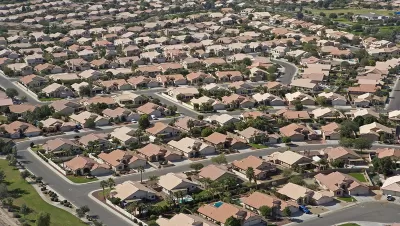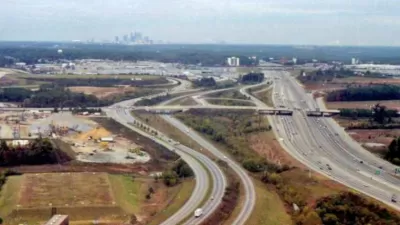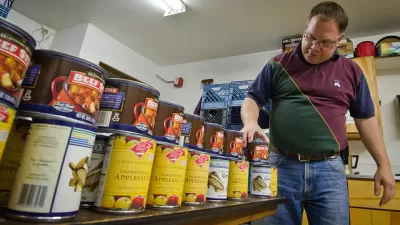Author Scott Allard debunks lingering myths about how people experience poverty in cities. Poverty's suburbanization, he argues, has more to do with the loss of jobs than migration from "inner cities."

Nowadays, poverty's suburban face challenges old notions of "inner cities" as repositories for the less fortunate. According to one narrative, Tanvi Misra writes, "As cities become more expensive, immigrants and communities of color have made a home for themselves outside the urban core—only to come face-to-face with the same issues they left behind."
In an interview, Scott Allard, author of Places in Need, complicates that picture. One of his findings: "When you break out the suburban regions, there are more poor people in the newer suburbs combined than in the older suburbs." At the same time, race doesn't define suburban poverty. "What you see is fairly consistent increases in poverty across race and ethnic groups in the suburbs. The increases among whites are large and substantial, as are increases among blacks and Hispanics."
While plenty of people are moving outward to escape newly expensive "inner cities," migration isn't suburban poverty's biggest driving force. According to Allard, "the most important factor is change in the labor market—the decline of the number of good-paying low-skilled jobs."
FULL STORY: Confronting the Myths of Suburban Poverty

Alabama: Trump Terminates Settlements for Black Communities Harmed By Raw Sewage
Trump deemed the landmark civil rights agreement “illegal DEI and environmental justice policy.”

Planetizen Federal Action Tracker
A weekly monitor of how Trump’s orders and actions are impacting planners and planning in America.

The 120 Year Old Tiny Home Villages That Sheltered San Francisco’s Earthquake Refugees
More than a century ago, San Francisco mobilized to house thousands of residents displaced by the 1906 earthquake. Could their strategy offer a model for the present?

In Both Crashes and Crime, Public Transportation is Far Safer than Driving
Contrary to popular assumptions, public transportation has far lower crash and crime rates than automobile travel. For safer communities, improve and encourage transit travel.

Report: Zoning Reforms Should Complement Nashville’s Ambitious Transit Plan
Without reform, restrictive zoning codes will limit the impact of the city’s planned transit expansion and could exclude some of the residents who depend on transit the most.

Judge Orders Release of Frozen IRA, IIJA Funding
The decision is a victory for environmental groups who charged that freezing funds for critical infrastructure and disaster response programs caused “real and irreparable harm” to communities.
Urban Design for Planners 1: Software Tools
This six-course series explores essential urban design concepts using open source software and equips planners with the tools they need to participate fully in the urban design process.
Planning for Universal Design
Learn the tools for implementing Universal Design in planning regulations.
Clanton & Associates, Inc.
Jessamine County Fiscal Court
Institute for Housing and Urban Development Studies (IHS)
City of Grandview
Harvard GSD Executive Education
Toledo-Lucas County Plan Commissions
Salt Lake City
NYU Wagner Graduate School of Public Service





























